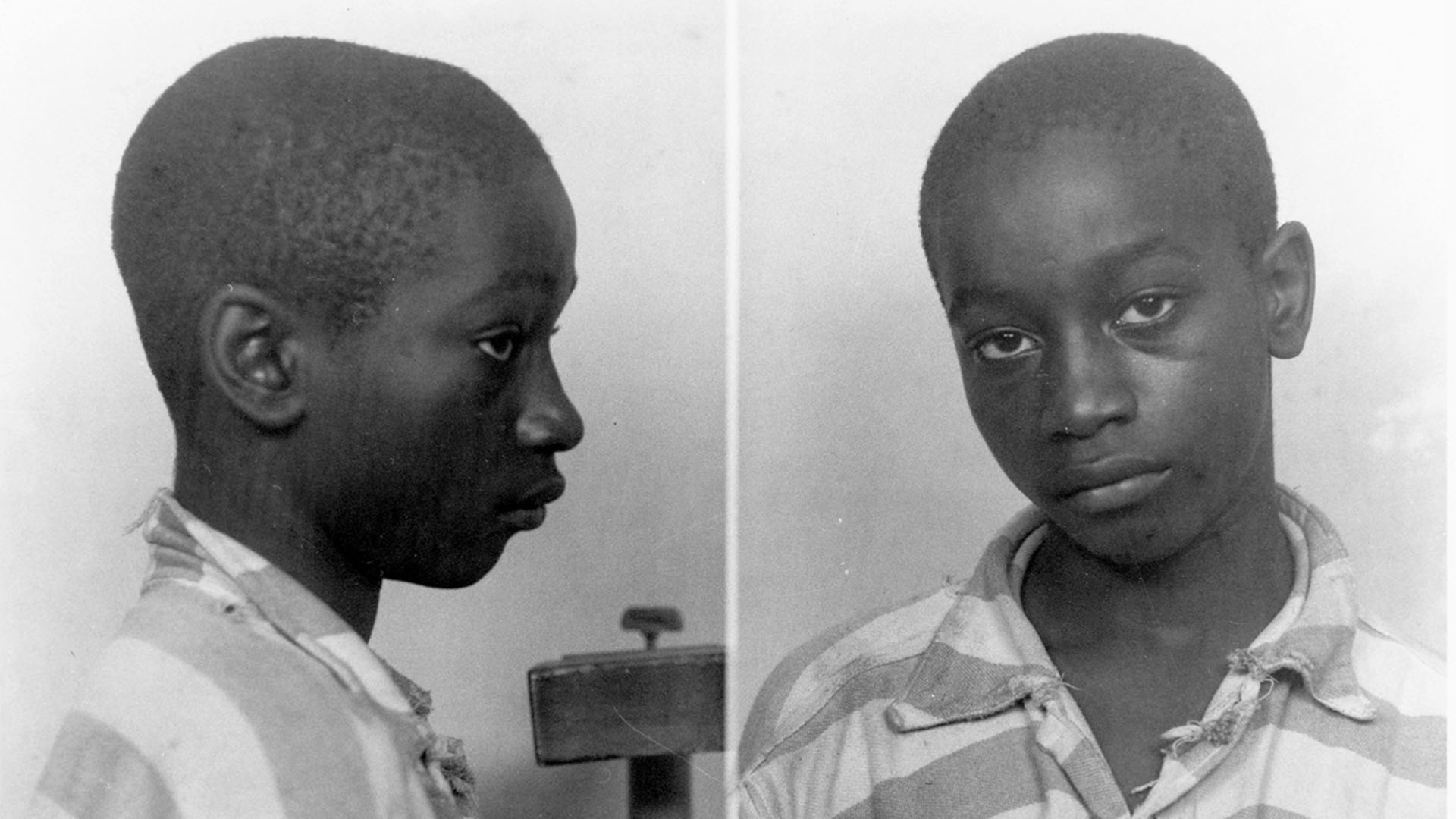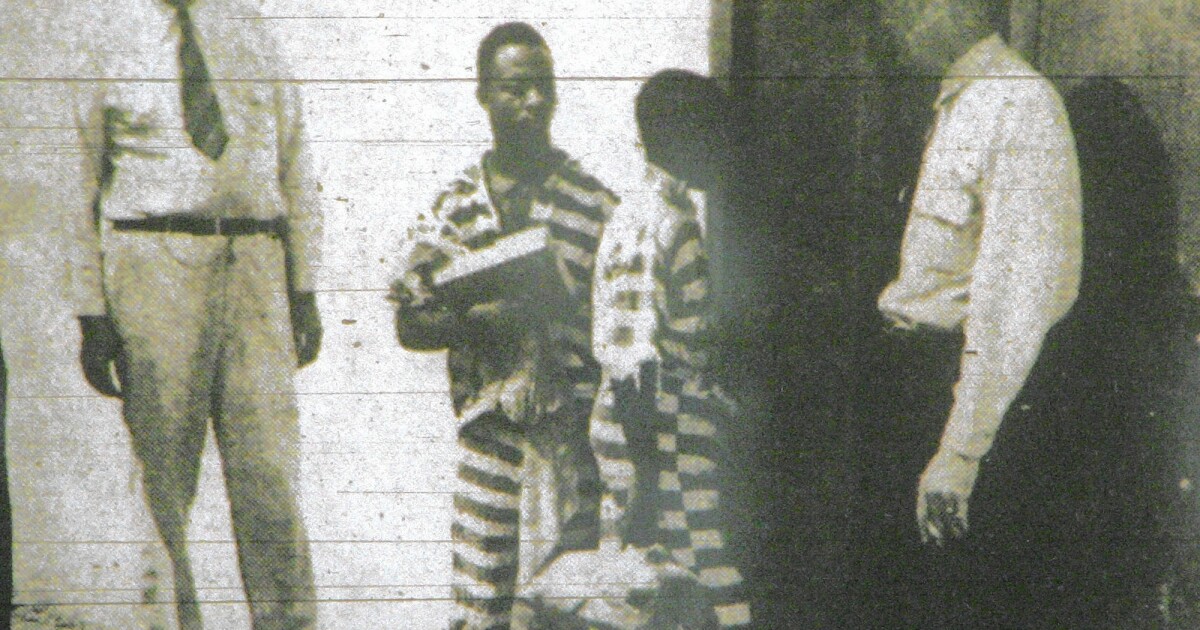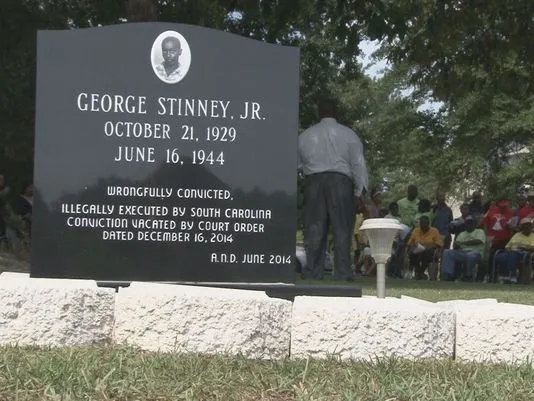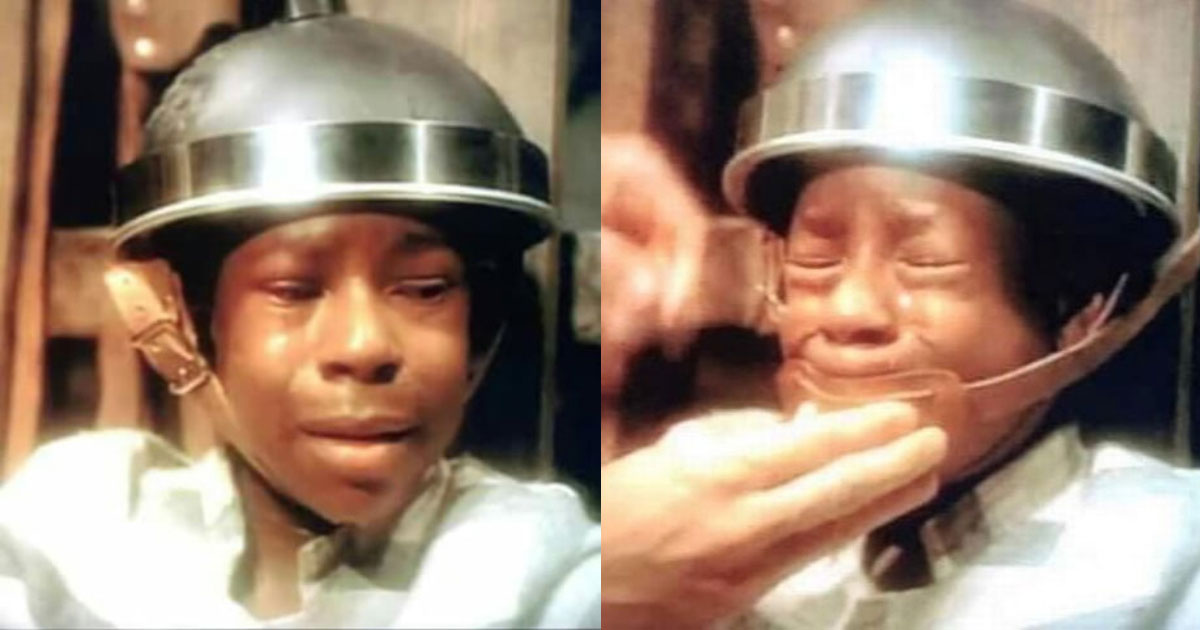George Stinney Jr. became the youngest person to have ever been executed in the history of the United States of America by an electric chair in the 20th century. He was just 14 years old.
The African American boy was detained and charged in March 1944 for killing two little girls, Betty June Binnicker (11) and Mary Emma Thames (7) in his hometown of Alcolu, South Carolina.

After almost seven decades, he was ultimately found innocent in 2014. What exactly happened during the ten minutes that brought a young African-American kid to an unjust, racially biased, and heartbreaking execution?
Let’s unravel more about this disturbing story in our article today.
Cold Blooded Murder
Mary Emma Thames (1937–1944) and Betty June Binnicker (1933–1944) were discovered dead on March 23, 1944, in a small ditch next to some railroad tracks.

People in the hometown of Alcolu where the incident took place were horrified since they had been looking for the girls the day before their remains were discovered. Search teams had been set up to look for the girls after they had not come home the day before.
Both of the girls who went out to gather some flowers were assaulted brutally until their skulls were broken. They had been killed with a railroad and it was placed close to their bodies.
Prime Suspect
Stinney became the prime suspect in this case as the bodies of the girls were found near his residence where he used to stay with his parents. Together on their bikes, Mary and Bethy allegedly pulled over to ask Stinney and his sister Aime where they could find yellow maypops.
This was the last instance when the girls were seen alive. Stinney was one of the few who was last to see them alive, which made things worse for him. Eyewitnesses of this case have confirmed that they saw Stinney and his sister gathering wildflowers with the girls.
His sister, however, insisted that Stinney was present to watch over their father’s cows at the time the girls disappeared.
Investigation
George Stinney Jr. along with his elder brother John was arrested by police on suspicion of killing the girls. John was released by the police officials however George was held in custody.
His parents were not allowed to see him until after his trial and conviction. As per the handwritten statement by H.S. Newman, Stinney’s arresting officer said, “I arrested a boy by the name of George Stinney. He then made a confession and told me where to find a piece of iron, about 15 inches where he said he put it in a ditch about six feet from the bicycle.”
Stinney was never implicated in the crime by any physical evidence or written confession. Despite his polite demeanor when being questioned, it seemed he was unaware of the seriousness of the situation. He was reportedly composed, respectful, and courteous.

After a few weeks, Stinney’s mother was granted permission to meet him. She disclosed that he was so terrified and told her that he did not commit the heinous crime.
Unfortunately, it turned out to be her last meeting with his son. He had not been convicted or found guilty, according to any official reports. The next time she happen to see her son was when she was asked to claim his body after execution by the officials.
Stinney’s teacher, W.L. Hamilton, who happens to be a black man in an interview with The Sumter Item about George in 1995 said, “I remember the day he killed those children, he got into a fight with a girl at school who was his neighbor.”
He added, “In those days you didn’t have to worry about children carrying guns and knives to school, but George carried a little knife and he scratched this child with his knife. I took him outside and we went for a little walk, and I talked to him. We went back into the school, in a submissive way, he begged for the child’s pardon.”
Trail
Stinney was put on trial for the horrific murder of the two white girls after confessing to the crimes. He was convicted by an all-white jury. The brief trial did not have a transcript, and it took the jury approximately ten minutes to conclude the case and pronounce their verdict that the kid must be executed. There was a statement as well that mentioned that an appeal had no chance.

The trial went on for around 120 minutes and his parents were not allowed to enter the courtroom. The court document read: “…be electrocuted until your body be dead in accordance with the law. And may God have mercy on your soul.”
Execution
Stinney spent 81 days in jail before being put to death, and his parents were seldom ever permitted to visit him during that time. He was led to the Columbian Penitentiary’s adult-sized electric chair, where he was put to death 90 days after the murder.
His 95-pound weight and 5-foot-1 height weren’t important. Books were put on the chair so that Stinney’s diminutive frame could fit inside it.

Stinney shook when the switch was flipped, and roughly 40 witnesses saw his face. Then, his body, arms, and legs bound him to the chair. He was laid to rest in an unmarked grave in Crowley.
Re-opening of the Case after Seven Decades
The siblings of Stinney Jr. never lost up on trying to prove their brother’s innocence in the court of law. After many decades, finally, the murder conviction of George Stinney was overturned in 2014. His sister Aime and he was looking after the family’s cow and were not present at the time of the murders according to his brothers.
They further claimed that his confession was forced and that he had an alibi. They also observed that Stinney denied killing Binnicker and Thames, according to Wilford “Johnny” Hunter, who claimed to be Stinney’s cellmate.

Stinney’s family worked to cleanse his record as they were aware that he cannot be brought back. His family requested a fresh trial in a petition in 2013.
Judge Carmen T. Mullen overturned Stinney’s murder conviction in December 2014 after months of deliberation, describing the death penalty as a “great and fundamental injustice.”
Tears of Joy
Stinney’s sister, Katherine Robinson, said, “It was like a cloud just moved away. When we got the news, we were sitting with friends… I threw my hands up and said, ‘Thank you, Jesus!’ Someone had to be listening. It’s what we wanted for all these years.”
The siblings of George Stinney Jr. were ecstatic to learn that their brother had been cleared after 70 years, and they were grateful that they had lived long enough to witness it.
Movies Depicting this Incident

The horrifying execution of the adolescent is recreated in the 1991 television film Carolina Skeletons. It was based on the book written by George’s nephew David Stout.
Another film about the Stinney case, 83 Days, was unveiled by Pleroma Studios in February 2014. Ray Brown wrote and produced the film which was directed by Andrew Paul Howell.
Stay connected to this space for more such interesting articles.
